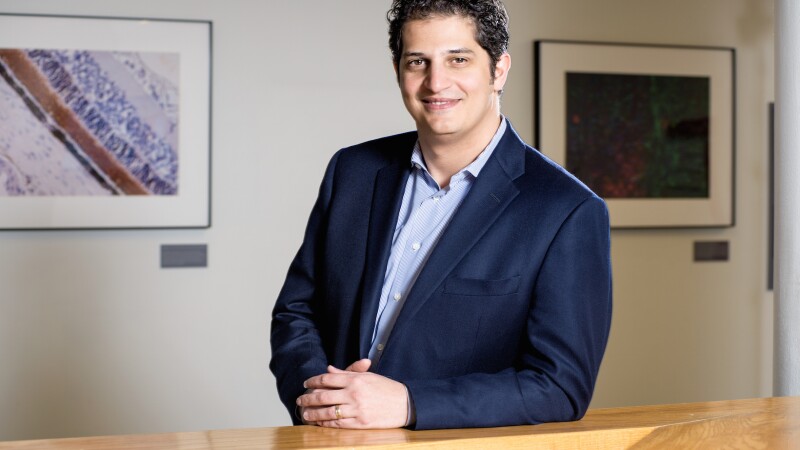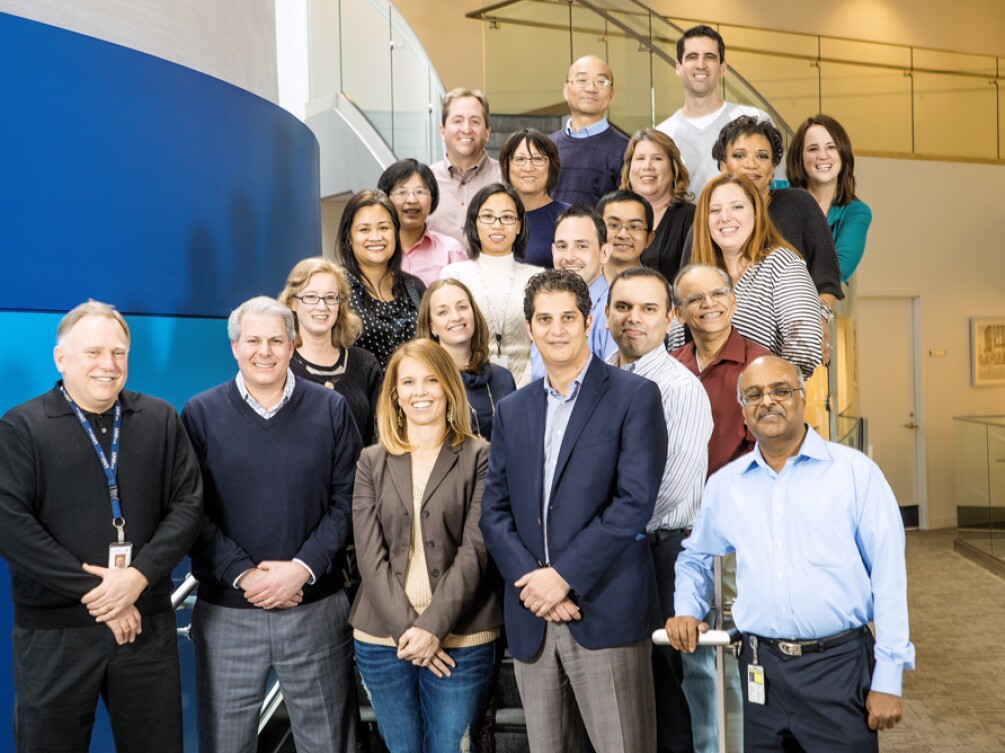It was November 2014, and Tahamtan Ahmadi—known as “Tahi” to most—was seated at a conference room table in Athens, Greece, across from one of the most well regarded multiple myeloma researchers in Europe.
They were discussing the emerging results of one of the clinical trials that had been conducted with a multiple myeloma drug Ahmadi and his team at Janssen Research & Development, LLC, part of the Janssen Pharmaceutical Companies of Johnson & Johnson, had been working tirelessly to develop.
The new drug works by binding to molecules on the surface of multiple myeloma cells—destroying the cancerous cells directly and also harnessing the body’s immune system against them. In clinical studies with patients who’d already gone through extensive treatments for the incurable blood cancer, yet whose disease was still progressing, nearly 30 percent responded to treatment with the medication.
“I’ll never forget what this esteemed doctor said to me after looking at the clinical trial results,” says Ahmadi, 43, now the Vice President of Experimental Medicine and Early Development for Oncology at Janssen. “He said, ‘You don’t have a drug—you have a breakthrough.’ It was so motivating.”
It wasn’t the first and wouldn’t be the last breakthrough moment for Ahmadi: The Food and Drug Administration (FDA) would ultimately grant Janssen a Breakthrough Therapy Designation for the treatment and approve it for patient use 18 months ahead of the company’s initial timeline.
Breakthrough Therapy Designation is significant in the world of drug research and development: Medications that receive this distinction are prioritized within the FDA to help get them to patients more quickly.
An ambitious R&D roadmap
When Ahmadi, then a medical director at Janssen, first joined the team in August 2013 to work on its clinical development plan, it had only been about a year since Janssen Biotech, Inc., had licensed the drug.
Although the medication showed promise at the time, Ahmadi needed to develop multiple phases of clinical research—and then collect data to share with the FDA and other health authorities around the world for potential approval.
So he hit the ground running.
By the fall of 2013, the Janssen team began working on the Phase 1 testing—the first time that a drug is tested in humans—already underway by its licensing partner. By October, Ahmadi and his impassioned team had forged ahead with Phase 2, which is focused on finding the appropriate dosage for patients.
I vividly remember one story of a patient in our Phase 2 study who tried everything, but the disease was still progressing. His doctor called and said his patient was responding well to the treatment.
And by team, we’re talking countless people—dedicated individuals like senior director and compound development leader Rick Jansson, senior director of translational research Kate Sasser, senior director of quantitative sciences Thomas Puchalski, senior director of regulatory affairs Reshma Patel, and CMC team leader and director Adam Dinerman—or, as Ahmadi puts it, “the man who ran the manufacturing process.”
“We very closely and quickly made calls on what we thought was going to be the right dose,” explains Ahmadi, “which helped us get to the recommended dose much faster than usual.”
The pressure was now on to complete Phase 2 as quickly as possible, since the FDA had agreed to consider the results from this stage of testing as the basis of a submission for potential approval. For most drugs, submissions are based on larger Phase 3 studies.
“I vividly remember one story of a patient in our Phase 2 study who had tried everything, but the disease was still progressing,” recalls Ahmadi. “When he enrolled in the study, he thought he was simply contributing to research before he died. Instead, his doctor called me and said that his patient was responding well to the treatment.”
That patient—and many others like him—served as the ultimate catalyst to push Ahmadi and his team to the FDA finish line. “It fueled the entire team’s belief that we were working on an amazing drug,” he says.
And thanks to the impressive results of the Phase 2 studies, “the FDA accelerated its approval because they also believed there was something clinically exciting here,” says Ahmadi.
In November 2015, just four months after Ahmadi and his team submitted its findings, the FDA approved the medication for the treatment of multiple myeloma in patients who’ve received at least three prior lines of therapy, including both of the commonly used classes of drugs available for multiple myeloma, as well as for those patients who are resistant to these classes.
First comes the treatment …
If you think Ahmadi considers his work with multiple myeloma done, think again.
In addition to the many patients who are coping with the fact that their disease is advancing, the National Cancer Institute estimates that some 26,850 new Americans will be diagnosed with multiple myeloma this year.
That’s a figure Ahmadi doesn’t take lightly, which is why he’s now focused on finding and developing more drugs like this one.
“Our new model is to look for breakthroughs,” says Ahmadi. “So when we see something that we really believe in, we are going to charge hard and develop it as aggressively as we can for the patients who desperately need it. It’s time to find more drugs we believe are transformational.”




